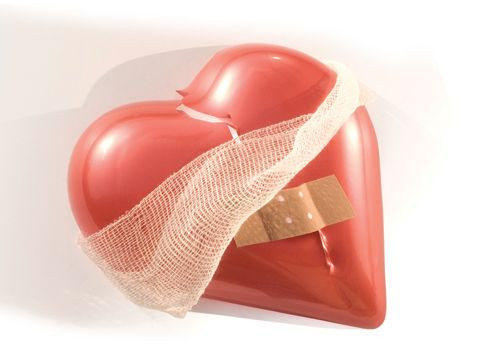Collagen Patch Speeds Repair Of Damaged Hearts: Anyone Need A Heart Bandage?

Stanford scientists have developed a patch that stimulates the repair of damaged heart tissue in mice, which could be used to treat with children with cardiac conditions in the future.
"For pediatric patients with congenital heart disease, or who have heart damage from a viral infection or other heart injury, we could use this to introduce growth factors directly to the heart in a way that would persist for a long period of time," said co-author Dr. Daniel Bernstein, a pediatric cardiologist at Stanford’s Lucile Packard Children's Hospital.
The regenerative patch consists of collagen — a natural substance found in connective tissue — embedded in a thin sheet of plastic mesh that serves as a scaffold. Collagen provides structural support for bones, tendons, and joints, but also for the hearts cells.
Like with soil for seeds, the patch provides a landing pad for new cells to thrive. Rather than replace heart muscle cells — responsible for cardiac contractions — the patch mainly promotes the growth of structurally supportive cells like fibroblasts. The porous nature of its plastic scaffold allowed for new blood vessels to easily weave through the patch and supply the recovering tissue with nourishment.
The researchers found that these collagen bandages insulated mice from cardiac trauma, limiting the degree of tissue damage. Two weeks after having a simulated heart attack, mouse hearts with implanted patches performed significantly better on echocardiograms, which measure overall cardiac function. This corresponded with a greater migration of new cells to the injured areas in mice with patches versus those without them.
In essence, the patch mimics the heart’s outer protective layer of tissue, known as the epicardium. The scientists tinkered with the flexibility of the plastic meshwork so that it would mimic the epicardium of a young heart, which enhanced the growth of new tissue.
“This synthetic tissue has the mechanical properties of the embryonic epicardium," continued senior author Dr. Ruiz-Lozano, a pediatrician at the Stanford University School of Medicine. “We paid tremendous attention to the physical properties of the materials and how their elasticity could modify the function of the heart."
The next step is to adapt the patches so they can carry medications or regenerative stem cells in follow-up animal studies and ultimately, one day, in humans.
Source: Serpooshan V, Mingming Zhao M, Metzler SA, et al. The effect of bioengineered acellular collagen patch on cardiac remodeling and ventricular function post myocardial infarction. Biomaterials. 2013.
Published by Medicaldaily.com



























